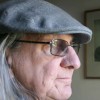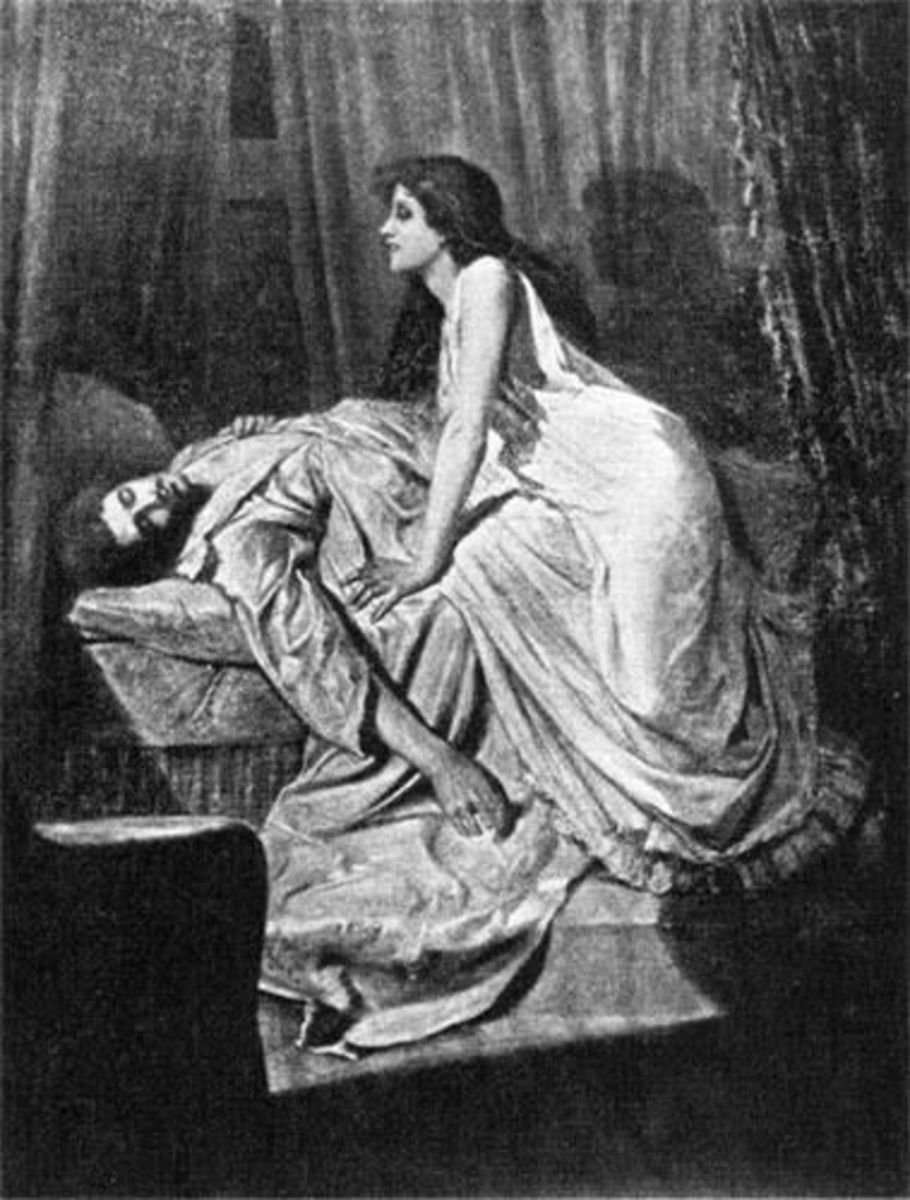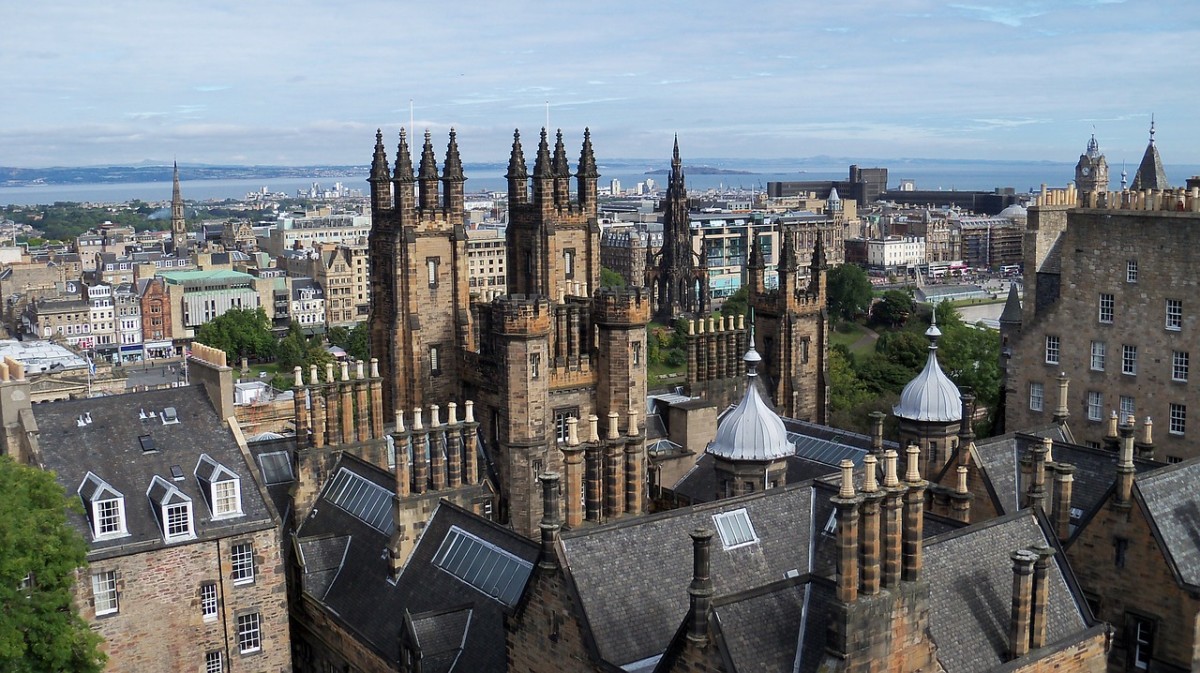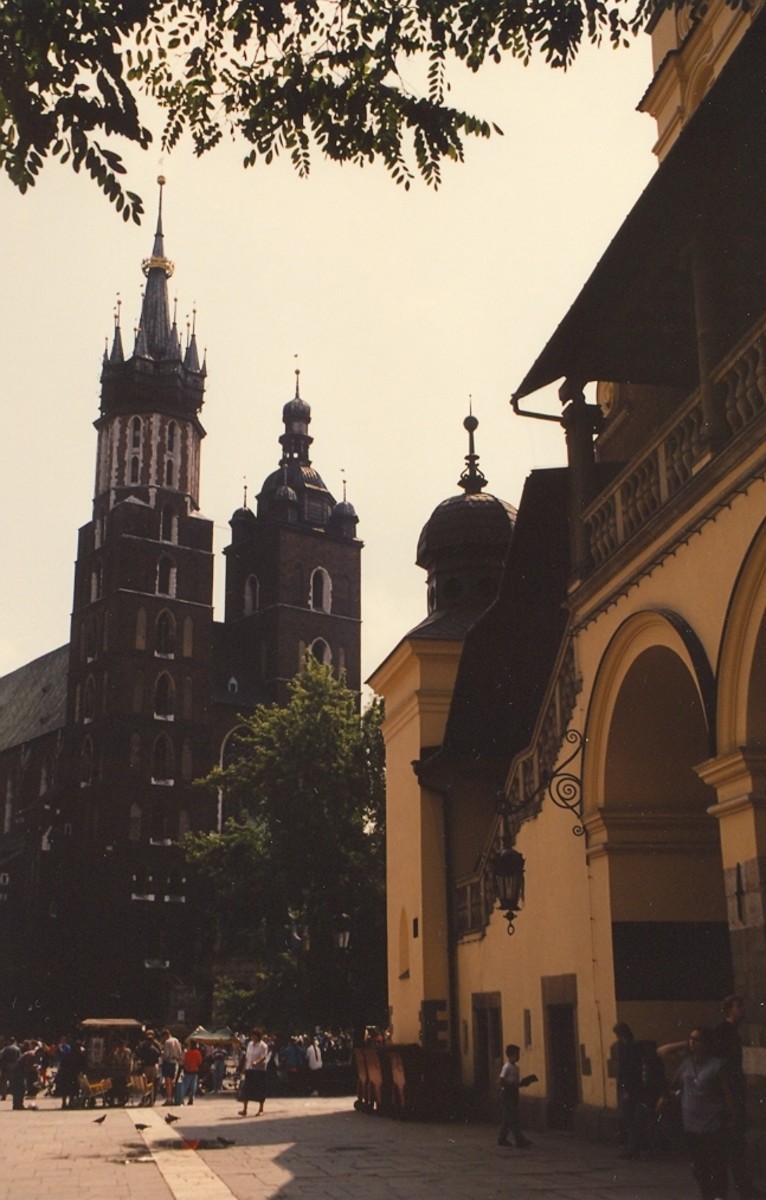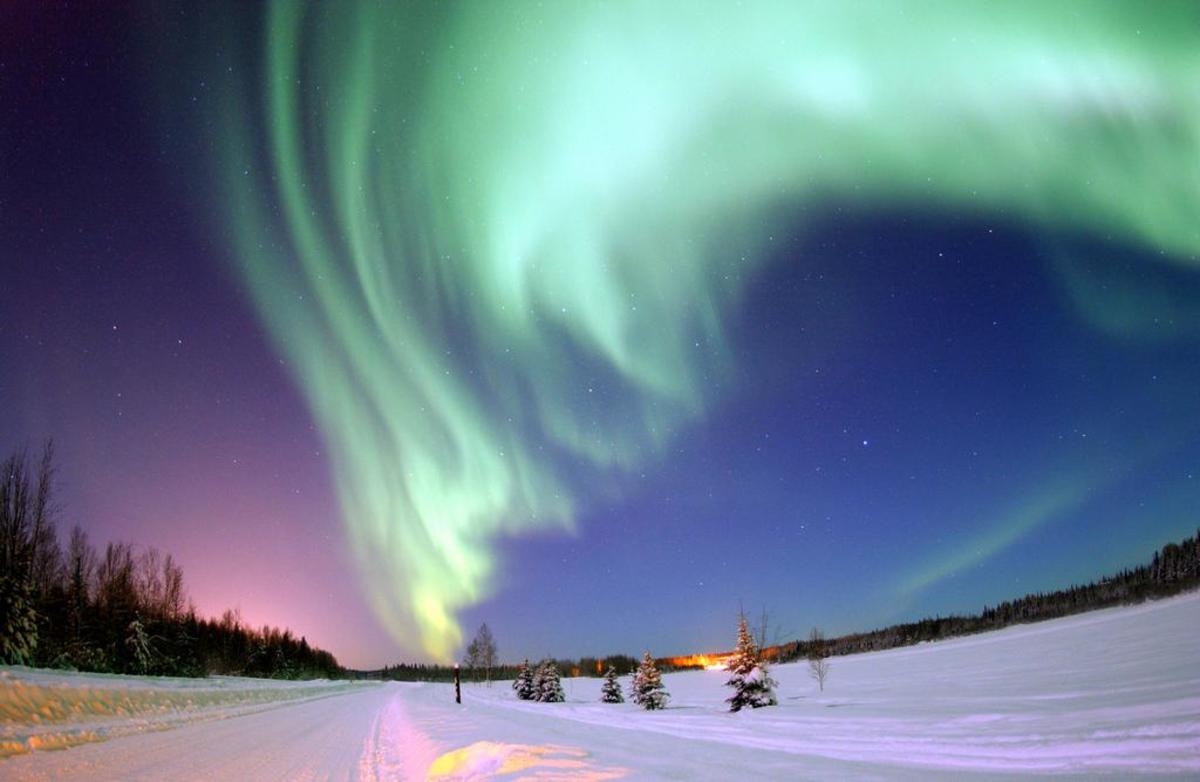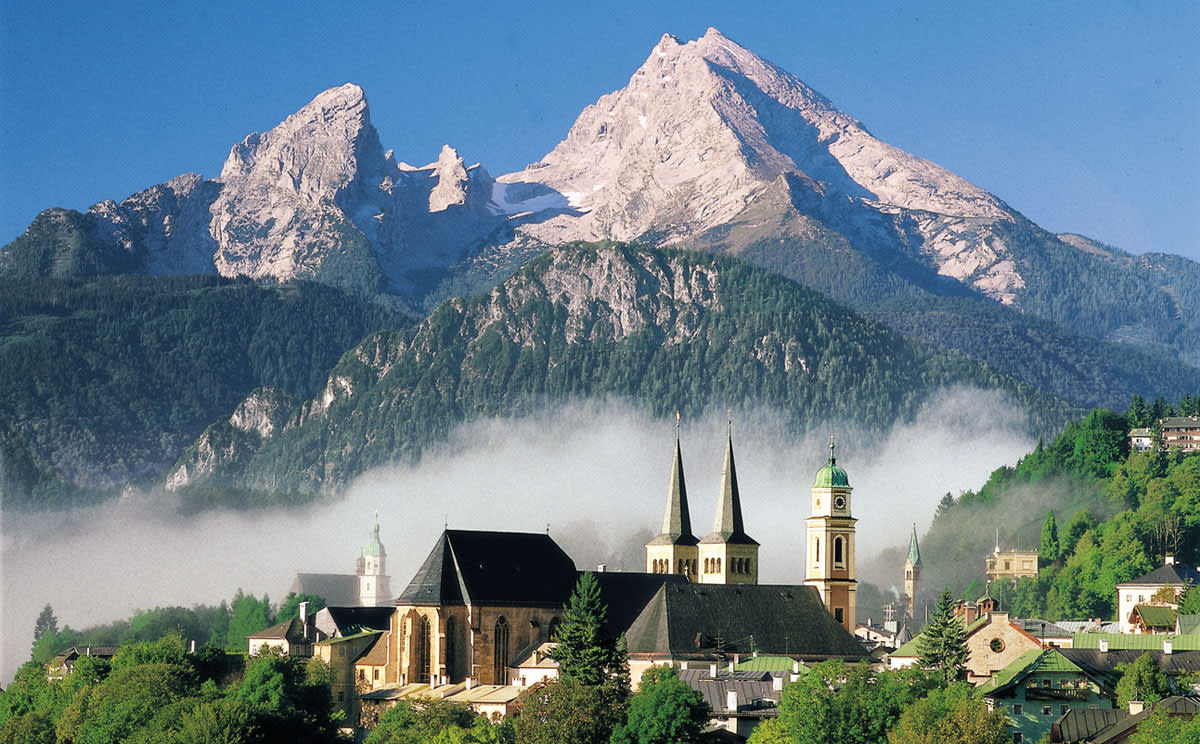Postcards illustrate a tour of a tense Europe at the beginning of the 20th Century
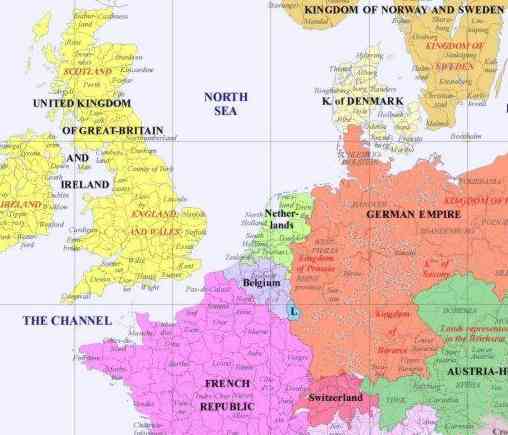
Europe in the early 1900s
Europe in the early 1900s was in a state of rising tension with the great powers, Germany, France, Britain and Russia all vying for power. The tension was fuelled by their colonial rivalries.
Britain was dusting itself off after the Anglo-Boer War which had badly dented its image. The Boers had been defeated but that defeat had come at great material and human cost to Britain.
Russia was reeling from the combined effects of a military defeat at the hands of Japan and the rising internal revolutionary pressure against the Tzar.
Germany and France were facing each other down in the old rivalry that saw the Alsace-Lorraine region struggling to find its identity - was it German or was it French?
At the same time benefits of the Industrial Revolution were starting to be felt by the ordinary people as the rail network spread out across the major European countries bringing prices down and making it easier for people to travel. Passports or other travel documents were not generally required for international travel at the time and so moving around Europe on the widening network of rail roads was a relatively simple affair, if not as comfortable as it would later become.
So it became fashionable for people to take tours of interesting places, and this was especially so for ordinary people who were now able to follow the routes of the old "Grand Tour" which in earlier Centuries had been the preserve of the leisured classes and out of reach of the working classes.
The new era was symbolised by the Eiffel Tower, built for the Paris Universal Exposition and completed in 1889.
In 1905, when the first of the postcards collected here were sent, Albert Einstein published his paper On the Electrodynamics of Moving Bodies in which for the first time he proposed his theory of special relativity, which started a great revolution in science; and Henri Matisse and Andre Derain began the Fauvist movement in art, another great revolution getting underway!
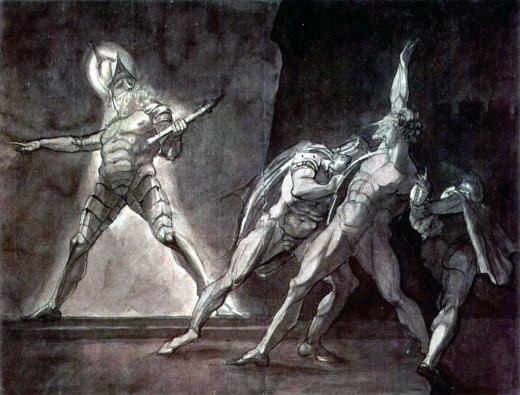
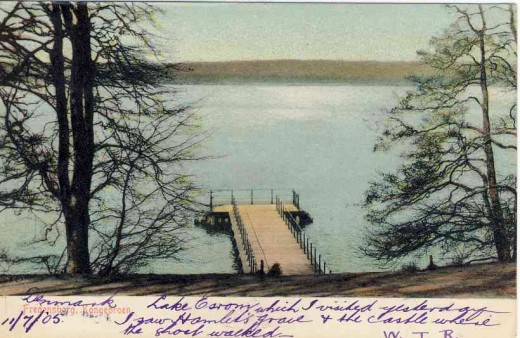
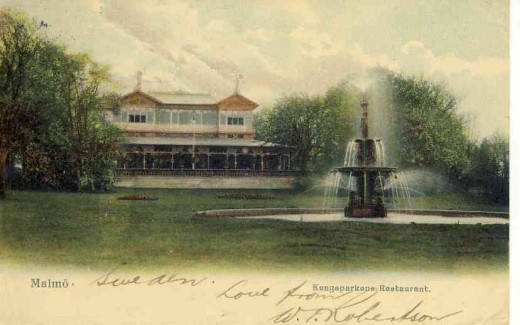
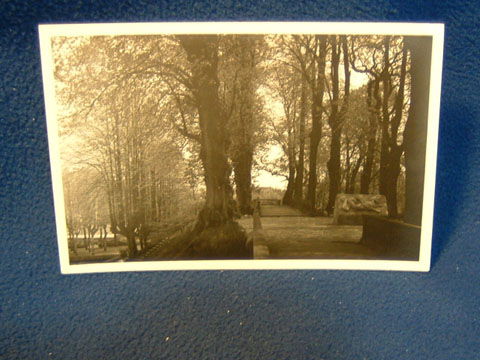
The Melancholy Dane
Marcellus: Peace! break thee off! look, where it comes again!
Bernardo: In the same figure, like the king that's dead. - from Shakespeare's tragedy Hamlet, Prince of Denmark, written between 1599 and 1601.
"I saw Hamlet's grave and the castle where the ghost walked" - a note on a postcard sent to my great aunt Hetty in July 1905.
The postcard itself shows a corner of Lake Esrom (in Danish Esrum Sø )where the Danish Royal Family has a palace which is its spring and autumn residence, Fredensborg Palace, on the eastern shore.
The postcard, posted on 11 July 1905, was sent by her cousin, William Truter Robertson, while he was on long leave in Europe after serving in the Anglo-Boer war of 1899 to 1902. Since he was still in Europe in 1905 it was evidently a very long leave!
I wonder if he knew that Hamlet's grave was an invention of local inhabitants of the Marienlyst area who wanted to please the many foreign tourists who came looking for the grave and for the brook where Ophelia drowned. Hamlet himself had no real connection with Elsinore but was the son of a pirate from Jutland!
His next postcard to Hetty, posted on 12 July 1907, is of a restaurant in the Kungsparken of Malmö, Sweden. Malmö is just across the Oresund Straights from Denmark, and is now connected to Denmark by the Öresund Bridge which is is the longest combined road and rail bridge in Europe and construction of the bridge was completed in 1999.
Malmö is closer to the Italian city of Milan than it is to the northernmost Swedish town of Kiruna.
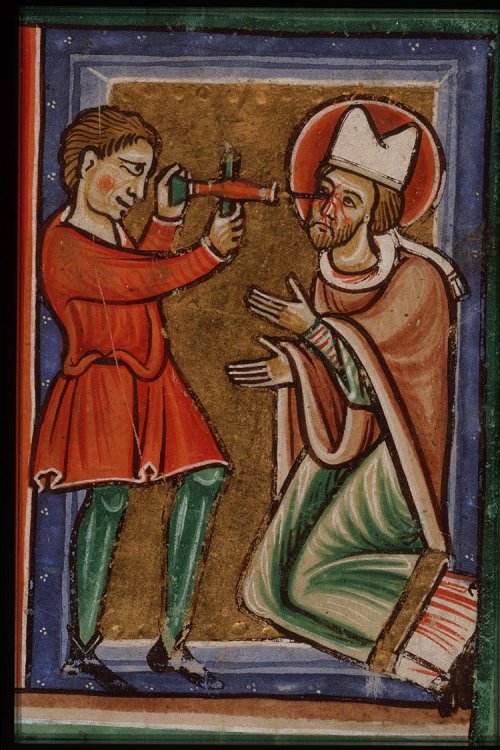
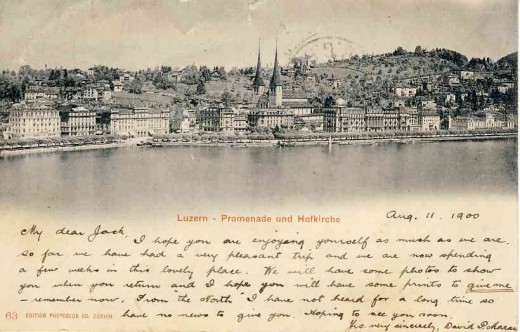
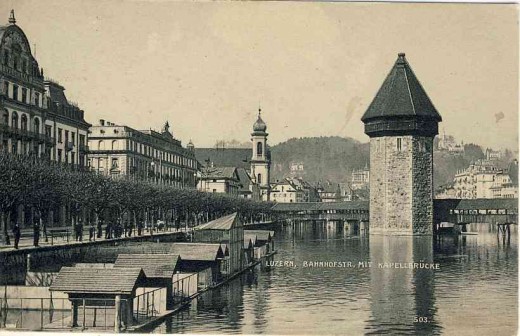
Lucerne and Leodegar
From the home of the "Melancholy Dane " we move to Lucerne in Switzerland.
It is from this ancient city that the oldest card in this collection was posted on 13 August 1900.
It shows the promenade and the twin towers of the Church of St Leodegar, the patron saint of the city. The church is commonly known in Lucerne as the Hofkirche. St Leodegar was a Bishop of Autun who was a supporter of the Carolingian dynasty against the Merovingians (for conspiracy buffs - see the 1982 book The Holy Blood and the Holy Grail by Michael Baigent, Richard Leigh and Henry Lincoln for more on this) and was captured and martyred by the Merovingians, who gouged his eyes out with a drill and cauterised the wounds, cut his tongue out, and eventually murdered him in 679. I guess that death was a pleasant release from the other horrors he was subjected to. (Nice guys in those days, weren't they? Almost as nice as we are today!).
This postcard was sent to John Robertson McGregor by someone called I think David P. Marais, about whom I know nothing. For more on John Robertson McGregor see my Hub "John Robertson McGregor's vintage postcards and postal censorship" http://hubpages.com/hub/John-Robertson-McGregors-vintage-postcards-and-postal-censorship
The next postcard shows the Hoffbahnstrasse and the famous Kapellbrücke (Chapel Bridge) and the octagonal Wasserturm (Water Tower), which was originally built as part of the city's fortifications. The bridge was completed in 1333 and the Wasserturm in the 13th Century. This postcard shows the original bridge which was partially destroyed in a fire in 1993.
This card was posted from Lucerne on 29 June 1909 and the message tells of travels from South Africa and within Europe. I have no idea who it is from, however.
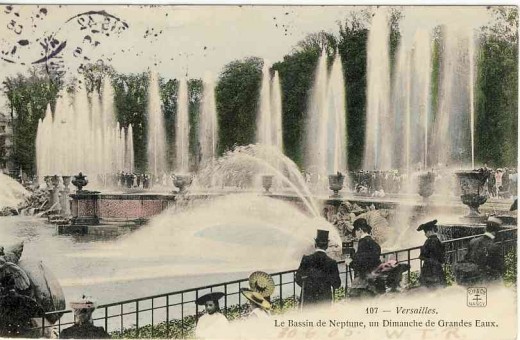
The Palace of the Sun King
From Lucerne we make our way to Paris and the gardens of the famous Palace of Versailles (Château de Versailles.), and in particular the famous gardens of the Palace where we find the Pool of Neptune (Bassin de Neptune) designed by André Le Nôtre, the landscape architect and gardener of Louis XIV, for whom the Palace of Versailles was built. Louis XIV moved there in May 1682.
The official website of the Palace gives the following description of the pool
http://en.chateauversailles.fr/discover-the-estate/the-gardens/the-copses/the-foutains
:
"The Neptune fountain was built under the direction of Le Nôtre between 1679 and 1681, and was then called the “Pool below the Dragon” or the “Fir Tree Pool”. Jacques-Ange Gabriel slightly modified the pool area and, in 1740, the sculptural decoration was installed. Three group: Neptune and Amphitrite, Proteus and the Ocean god by Jean-Baptise Lemoyne. The new fountain, officially opened by Louis XV, aroused admiration for the number, the force and the variety of the jets of water playing over the lead sculptures. It features ninety-nine water effects that compose an extraordinary aquatic spectacle."
The card was posted to Aunt Hetty from Paris on 30 June 1905. Interestingly her address on the card is given as "care of Dr. J.R. McGregor, Aliwal North", the same Jacko whose cards featured in the Hub referenced above. The small town of Aliwal North was at the time in the then Cape of Good Hope colony. Jacko was in General Practice in the town at that time. He later opened a practice in the town of George, which is where, on a visit to him, my father met my mother, whose father was a pharmacist there.
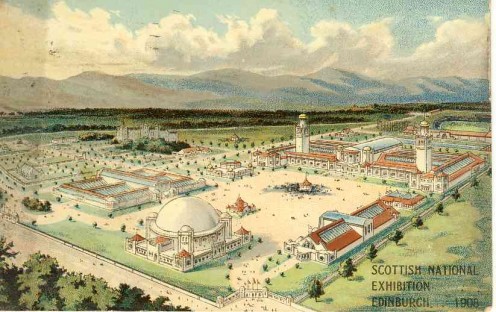
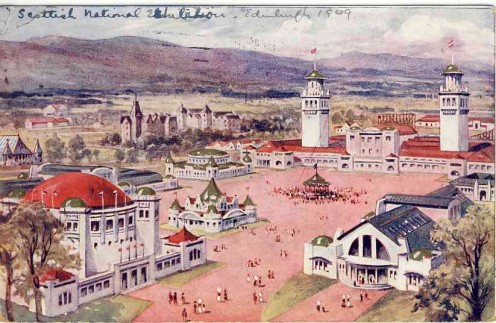
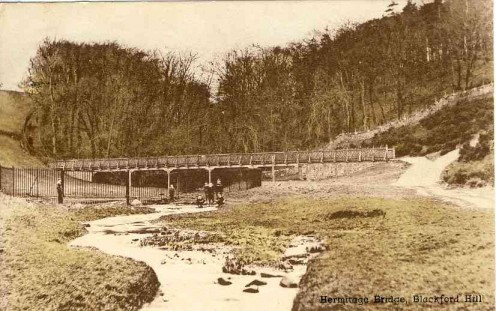
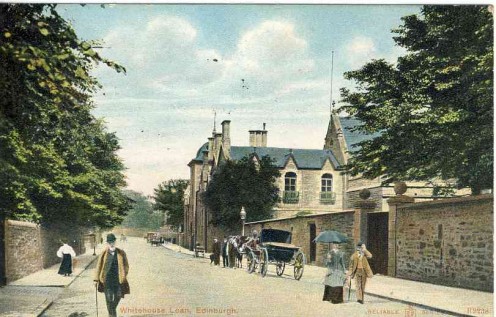
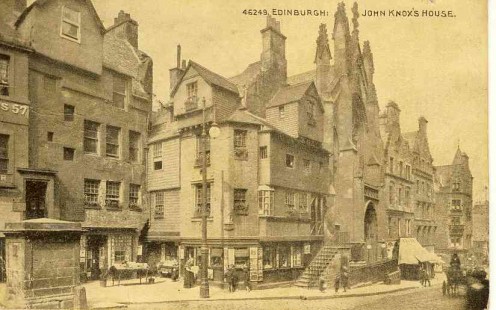
Across the Channel to Scotland
From the Catholic excesses of Versailles we move across the English Channel to the polar opposite, in a sense, the dour Calvinist environs of Edinburgh, the capital of Scotland, and the home of Scottish reformer John Knox.
The first two of these cards show aspects of the 1908 Scottish National Exhibition in Edinburgh. This exhibition ran for six months in 1908 and was visited by almost 3.5 million people.
An interesting feature of the second of these cards is that Aunt Hetty's address is given as "157 St Andrew's Street, Bloemfontein, ORC (Orange River Colony). She was evidently visiting her uncle Alexander McGregor, at the time Chief Justice of the colony and son-in-law of a former president of the Orange Free State Republic, John Brand.
The next Edinburgh card is of the Hermitage Bridge on Blackford Hill in Edinburgh. It is addressed to Mrs G.J. du Plessis, Aunt Hetty's sister Mina, who with her husband was leaving to go back to South Africa. The postmark date is 31 May 1906, exactly four years before the formation of the Union of South Africa.
Another card wishing the couple bon voyage shows Whitehouse Loan in Edinburgh. It is from M.C. Hitzeroth, of whom I know nothing at all!
The last card in this series shows a view of John Knox House in Edinburgh. John Knox was the great theologian and reformer who is said to have lived in the house. The house was built in 1490 and is now owned by the Church of Scotland.
This card was posted in Portmahomack on 11 October 1922. It is written in Afrikaans and reads in part :"Ons is nog in die noorde van Skotland by 'n neef van Mina (We are still in the north of Scotland with a nephew of Mina's)". The card was written by Gerrit du Plessis, Mina's husband, but the address is obscured by Postage Due stamps. I guess it was also sent to Aunt Hetty, his sister-in-law.
Portmahomack is indeed far in the north of Scotland and is the site of one of the oldest settlements in the British Isles. The first confirmed Pictish monastery dating back to about 550 CE was also located there.
So in cards we have travelled from Sweden to Switzerland, then to France and across the Channel to Scotland. In terms of Church history from Lutheran to Catholic to Calvinist. Interesting travels indeed.
